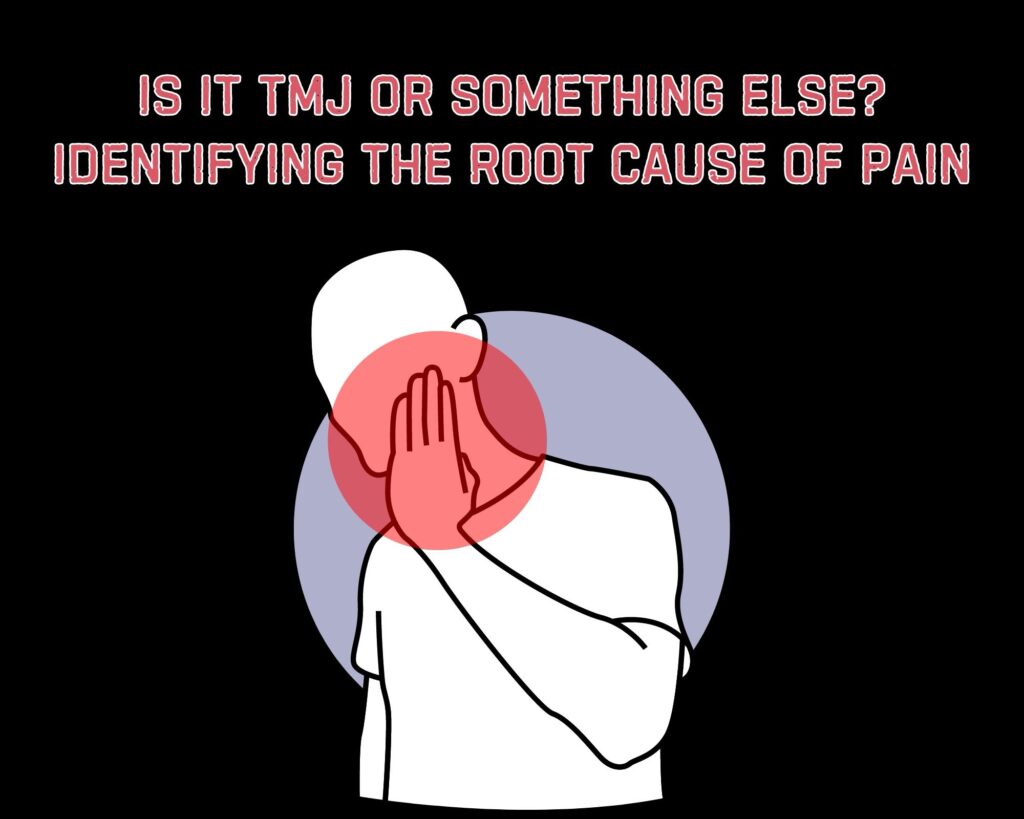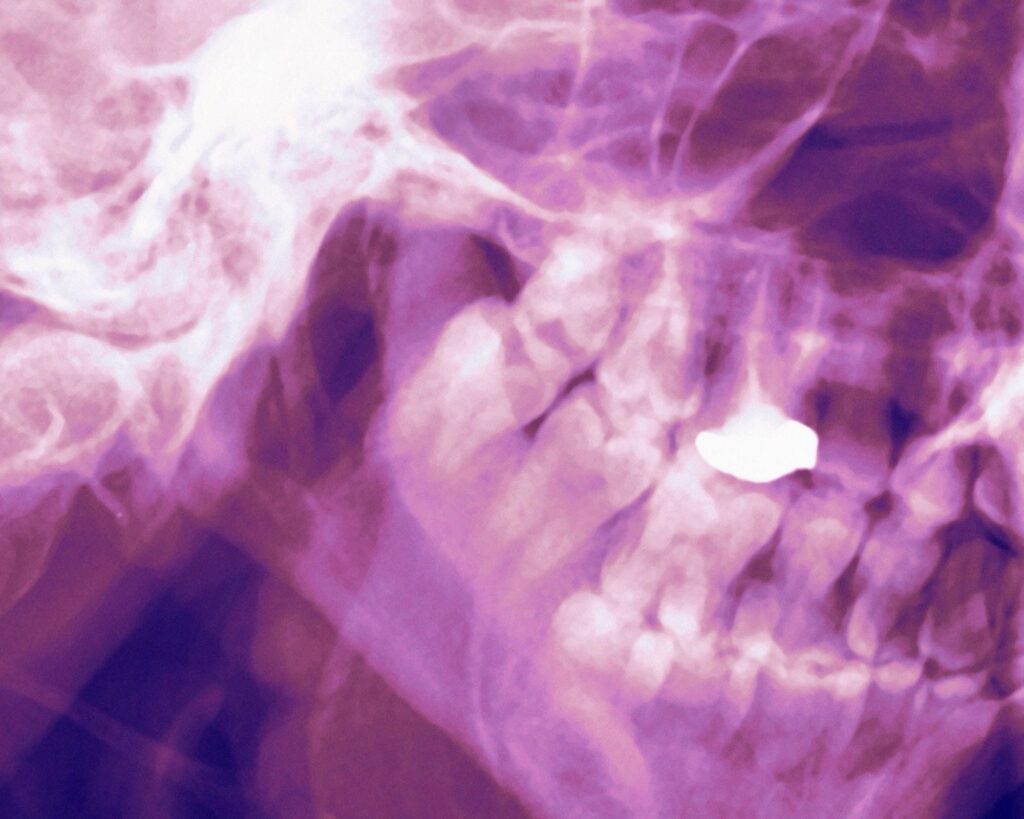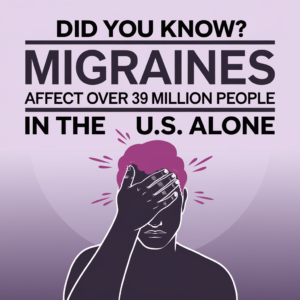Navigating through chronic pain, especially when it’s coming from your jaw, neck, or shoulders, is really tough. It’s confusing and frustrating, and sometimes, you feel totally alone in it. I’ve been through this myself, and I’ve also spent a lot of time learning about these kinds of pain issues. Let me share what I’ve learned, both from my own experience and from digging into the topic.

The Mystery of Where the Pain Comes From
Sometimes, it feels like a detective game trying to figure out where exactly my pain is coming from. Is it my TMJ acting up, or is it my neck or shoulder causing the trouble? Here’s what I’ve found out:
- TMJ Pain: This kind of pain feels like it’s right in your jaw. You might also get headaches or even earaches. It’s like your jaw is on a tight schedule, always tense and never getting a break. I learned more about this from reading about how jaw clenching and teeth grinding affect your health. It opened my eyes to how much strain I was putting on my jaw without even realizing it.
- Neck Pain: This is a tricky one because it can feel connected to your jaw pain, but it’s its own beast. It might start in your neck but then spread out, making your shoulders and even your arms feel sore or numb. There’s a great article on chronic neck pain that talks about how complex neck pain can be, especially when the usual treatments don’t work.
- Shoulder Pain: Shoulder pain is another level of confusion because it can shoot pain all the way down to your fingers. It makes figuring out the source even harder.
Finding Relief
After a lot of trial and error, I found a couple of things that really helped:
- Immediate TMJ Relief Product: I stumbled upon this Jaw Release tool that’s been a game-changer for my TMJ pain. It’s like this little gadget that helps relax my jaw and neck, giving me some much-needed relief.
- Osteo Cervical Pillow for Neck Pain: Sleeping was a nightmare until I tried this cervical pillow. It’s designed specifically for neck pain relief and has made a big difference in how I feel in the morning.

What TMJ Does Not Cause vs. What It Can Cause
It’s important to know that while TMJ can cause a lot of discomforts, like jaw pain, headaches, and even dizziness, it doesn’t usually cause pain that spreads far from the jaw area. So, if you’re feeling pain down your arms or in your lower back, it’s probably not just TMJ. I learned a lot about what to expect from TMJ from this detailed look at TMJ disorder symptoms.
Understanding where your pain is coming from is the first step to managing it. For me, learning about my pain and finding the right tools and treatments has made a big difference. If you’re dealing with similar issues, know that you’re not alone, and there are solutions out there that can help.
Understanding TMJ: Symptoms and Misconceptions
Ever wake up with a sore jaw or a headache that feels like it’s wrapping around your skull? That’s been my morning routine more often than I’d like to admit. At first, I thought I was just sleeping funny or maybe spending too much time staring at screens. But when the pain started becoming a regular guest, I knew something was up. That’s when I stumbled upon TMJ disorders, and boy, did it feel like I found the missing piece of the puzzle.
TMJ, or temporomandibular joint disorder, is like that annoying guest at a party who just won’t leave. It can cause a whole bunch of symptoms: pain in your jaw, clicking sounds when you open or close your mouth, headaches, and even earaches. For a while, I thought it might be causing my neck pain and the weird tingling in my fingers, but turns out, that was a bit of a mix-up on my part.
A lot of folks think TMJ can cause just about any pain in your upper body, but that’s not really the case. Sure, it can make your jaw and head feel like they’re in a vice, but it’s not usually going to be the culprit behind neck pain burning into your fingers or shoulder issues. I learned that the hard way, chasing down treatments for TMJ when I should have been looking at my neck and shoulders too.
For anyone else going down this rabbit hole, I found something that’s been a game-changer for my TMJ pain. It’s this Immediate TMJ Relief Product Jaw Release tool I found on Amazon. It’s designed to help with jaw and neck tension, and let me tell you, it’s been a lifesaver on those mornings when I wake up feeling like my jaw went a few rounds with a heavyweight champ.
But TMJ isn’t just about physical symptoms. It messes with your day-to-day life in ways you wouldn’t expect. I’ve had days where the pain and discomfort were so bad, I couldn’t focus on anything else. Reading up on it, I found out I wasn’t alone. This article on TMJ Disorder: Constant Symptoms Experienced by Diagnosed Individuals really hit home for me. It talks about how TMJ can affect more than just your jaw—it can throw a wrench in your whole routine.
So, if you’re dealing with a sore jaw, headaches, or any of the other fun stuff TMJ brings to the party, know that you’re not alone. And while it might feel like you’re piecing together a puzzle without the picture on the box, there are tools and resources out there that can help. Just remember, TMJ might be a part of the picture, but it’s not always the whole story. Keep an eye on those other aches and pains, and don’t be afraid to get them checked out too.

Neck Pain: Causes and Connections
Now, let’s talk about neck pain, a real pain in the neck for many, including me. Before I got savvy about what was really going on with my body, I lumped all my pain together, blaming it on my jaw and TMJ issues. But neck pain? That’s a whole different beast, and figuring that out was a game-changer for me.
Neck pain can sneak up on you for a bunch of reasons. Maybe you’re like me, glued to your computer or phone all day, and your posture is, well, not great. Or perhaps you had a minor fender bender a while back, and it left you with a bit of whiplash. Sometimes, it’s something more internal, like arthritis or a disk problem in your cervical spine. Whatever the cause, when your neck is sore, it feels like everything else is off too.
One thing that really opened my eyes to the connection between my neck pain and other symptoms was learning about how everything in our upper body is connected. For instance, neck issues can sometimes mimic TMJ symptoms because of all the nerves running through that area. It’s like your body’s wiring gets crossed, and signals get sent to the wrong places. This was a lightbulb moment for me, especially when I realized that my “TMJ headaches” might actually be coming from my neck.
For anyone else trying to untangle the mystery of their pain, I found this Osteo Cervical Pillow for Neck Pain Relief that’s been a real help. It’s designed to support your neck while you sleep, keeping everything aligned and giving those strained muscles and joints a break. Switching to this pillow made a noticeable difference in how I felt in the morning, cutting down on the headaches and that stiff, achy feeling in my neck.
And if you’re diving deep into understanding how all this pain is connected, like I did, you might find Chronic Neck Pain: When Conventional Treatments Don’t Bring Relief really insightful. It talks about the struggles of dealing with persistent neck pain and explores some less conventional ways to find relief when the usual treatments aren’t cutting it.
So, while it’s tempting to pin all our pain on one thing, like TMJ, it’s super important to look at the bigger picture. Our bodies are complex, and pain in one area can be closely linked to issues in another. Keeping an open mind and exploring all potential sources of your pain can lead you to the relief you’ve been searching for.

What Symptoms Can TMJ Cause, and How Common Are They?
Diving into the world of TMJ (temporomandibular joint disorder) feels like opening a Pandora’s box of symptoms. Before I got to grips with what TMJ was throwing my way, I was baffled by the variety of ways it manifested. Here’s a rundown of symptoms that can come from TMJ, along with an estimate of how common each symptom is among sufferers, based on available research and patient reports:
- Jaw Pain or Tenderness (85-95%): Almost everyone with TMJ experiences some level of discomfort in their jaw, especially when chewing or after long periods of talking.
- Clicking or Popping Sounds in the Jaw (70-80%): This is a hallmark of TMJ, noticeable when opening or closing the mouth, though it’s not always accompanied by pain.
- Headaches or Migraines (65-75%): Many people with TMJ report tension headaches or migraines, often due to muscle strain or misalignment in the jaw affecting surrounding muscles.
- Ear Pain or Fullness (50-60%): Because the TMJ is close to the ear, issues with the joint can sometimes feel like ear pain, even though it’s not an ear infection.
- Difficulty Opening the Mouth Fully (45-55%): In more severe cases, TMJ can limit how wide you can open your mouth, making eating and speaking uncomfortable.
- Neck and Shoulder Pain (40-50%): The muscles around the jaw and neck are interconnected, so when TMJ causes tension in the jaw, it can lead to pain in the neck and shoulders.
- Tinnitus or Ringing in the Ears (25-35%): Some TMJ sufferers report hearing ringing or buzzing sounds, a symptom likely related to the joint’s proximity to the ear.
- Dizziness or Vertigo (20-30%): Though less common, TMJ can affect balance, leading to feelings of dizziness or vertigo in some individuals.
- Tooth Sensitivity or Pain (15-25%): TMJ can cause people to clench or grind their teeth, leading to sensitivity or pain.
- Numbness or Tingling in the Fingers (10-20%): This is a rare symptom and is usually a sign of severe TMJ affecting nerve function.
Understanding the wide range of symptoms TMJ can cause is crucial for anyone trying to pinpoint the source of their discomfort. For a deeper dive into how TMJ impacts health beyond the jaw, “The Hidden Culprit Behind Your Headaches: How Jaw Clenching and Teeth Grinding Affect Your Health” offers valuable insights.
If you’re struggling with TMJ and looking for immediate relief, consider trying the Immediate TMJ Relief Product Jaw Release. This tool is designed to alleviate tension in the jaw and neck, addressing some of the most common TMJ symptoms directly.
Remember, while TMJ can cause a wide array of symptoms, the intensity and combination of symptoms can vary greatly from person to person. If you suspect TMJ is the source of your pain, consulting with a healthcare professional for a proper diagnosis and treatment plan is essential.

What Are the Different Levels of Treatment for TMJ, from Conservative to More Intensive?
When it comes to tackling TMJ, there’s a spectrum of treatment options available, ranging from simple, no-risk methods to more involved, intensive treatments. My journey through TMJ relief started with the basics and gradually escalated as I learned more about what my body needed. Here’s a breakdown of the treatment levels for TMJ, starting with the most conservative approaches:
- Lifestyle Changes and Home Remedies (Low Risk):
- Diet Adjustments: Switching to soft foods to reduce jaw strain.
- Stress Management: Techniques like meditation or yoga to ease muscle tension.
- Heat or Ice Packs: Applying these to the jaw area to reduce pain and swelling.
- Physical Therapy and Exercises (Low to Moderate Risk):
- Jaw Exercises: Strengthening and stretching exercises to improve jaw mobility and reduce pain.
- Physical Therapy: Guided therapy sessions to address posture issues and muscle imbalances contributing to TMJ.
- Dental Splints or Mouthguards (Moderate Risk):
- Wearing a custom-fitted device at night to prevent teeth grinding and clenching, common triggers for TMJ symptoms.
- Medications (Moderate Risk):
- Pain Relievers and Anti-inflammatories: Over-the-counter or prescription options to manage pain and inflammation.
- Muscle Relaxants: Sometimes prescribed for short-term relief of muscle spasms around the jaw.
- Injections (Moderate to High Risk):
- Botox Injections: Can help relax the muscles of the jaw. Though not a first-line treatment, it’s gaining popularity for its effectiveness in certain cases.
- Corticosteroid Injections: Used sparingly for severe inflammation.
- Surgery (High Risk):
- Arthrocentesis: A minimally invasive procedure to irrigate the joint and remove debris.
- TMJ Arthroscopy: A slightly more involved surgery with the potential for quicker recovery than open surgery.
- Open Joint Surgery: Considered only when the structural problems in the jaw cannot be resolved with less invasive treatments.
For those starting their journey toward TMJ relief, incorporating Osteo Cervical Pillow for Neck Pain Relief into your sleep routine can offer additional support by ensuring proper alignment and reducing strain on the jaw and neck overnight.
Navigating TMJ treatment options can feel overwhelming, but understanding the range of available methods—from the simplest to the most complex—can empower you to make informed decisions about your care. Always consult with a healthcare professional to determine the most appropriate treatment plan based on your specific symptoms and medical history. Remember, what works for one person may not work for another, so it’s important to approach TMJ treatment with patience and an open mind.
Real Stories from Those Living with TMJ
Alex’s Story: The Musician with a Melody of Pain Alex, a guitarist in a band, started experiencing sharp jaw pain and headaches during rehearsals. Initially dismissing it as stress, the pain became a constant presence, affecting his performance. “There were days when I couldn’t even open my mouth wide enough to sing,” Alex recalls. After being diagnosed with TMJ, he began a regimen of physical therapy and used a mouthguard at night. “It hasn’t been easy, but I’ve learned to manage my TMJ. It’s like tuning a guitar; you have to find the right balance.”
Brianna’s Story: The Artist Who Drew Strength from Pain Brianna, an illustrator, found her TMJ symptoms flaring up during long hours of work. The combination of jaw pain and migraines made focusing on her art nearly impossible. “I felt like TMJ was erasing my identity as an artist,” she says. Brianna turned to a combination of stress management techniques and a specialized TMJ diet to alleviate her symptoms. “Creating art is my life, and TMJ won’t take that away from me. I’ve found ways to cope and keep doing what I love.”
Carlos’s Story: The Athlete Who Wouldn’t Be Benched by Pain Carlos, a high school soccer coach, experienced severe jaw pain and earaches that interfered with his coaching. “I thought I was just overworked until my dentist told me it was TMJ,” he explains. Carlos underwent a series of Botox injections, which significantly reduced his pain. “TMJ tried to sideline me, but I wasn’t having it. Now, I’m back on the field, doing what I do best.”
Questions and Answers About TMJ
Can TMJ go away on its own?
In some cases, TMJ symptoms can improve without extensive treatment, especially if they’re caused by temporary stress or strain. However, persistent or severe symptoms often require intervention to prevent worsening.
Are there any long-term complications of TMJ?
Without proper management, TMJ can lead to chronic pain, dental issues from teeth grinding, and even changes in jaw function. Early intervention can help mitigate these risks.
Can exercises really help with TMJ?
Yes, jaw exercises can strengthen the muscles around the joint, improve flexibility, and reduce symptoms for many people. It’s important to perform these exercises under the guidance of a healthcare professional to ensure they’re done correctly.
Is surgery necessary for TMJ?
Surgery is typically considered a last resort for TMJ treatment and is only recommended when other, less invasive treatments have failed to provide relief. Many people find success with non-surgical options.
Living with TMJ is a deeply personal experience that varies widely among individuals. While the journey may be fraught with challenges, the stories of Alex, Brianna, and Carlos highlight the resilience and creativity of those navigating life with TMJ. If you’re struggling with TMJ, remember that you’re not alone, and there are resources and treatments available to help you manage your symptoms and continue pursuing your passions.
As an Amazon Associate we earn from qualifying purchases through some links in our articles.




